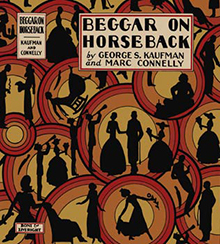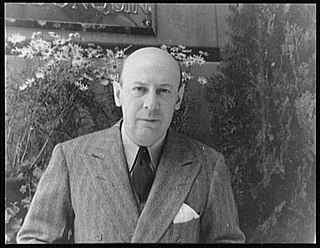
Marcus Cook Connelly was an American playwright, director, producer, performer, and lyricist. He was a key member of the Algonquin Round Table, and received the Pulitzer Prize for Drama in 1930.
Come Back, Little Sheba is a 1950 play by the American dramatist William Inge. The play was Inge's first, written while he was a teacher at Washington University in St. Louis.

Roland Young was an English-born actor. He began his acting career on the London stage, but later found success in America and received an Academy Award nomination for his role in the film Topper (1937).
The Iceman Cometh is a play written by American playwright Eugene O'Neill in 1939. First published in 1946, the play premiered on Broadway at the Martin Beck Theatre on October 9, 1946, directed by Eddie Dowling, where it ran for 136 performances before closing on March 15, 1947. It has subsequently been adapted for the screen multiple times. The work tells the story of a number of alcoholic dead-enders who live together in a flop house above a saloon and what happens to them when the most outwardly "successful" of them embraces sobriety and reveals that he has been on the run after murdering his "beloved" wife.
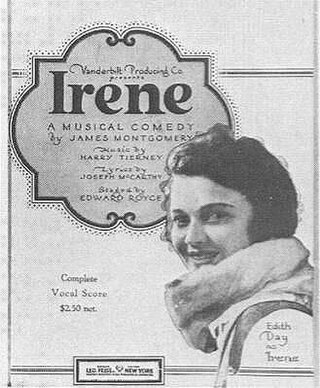
Irene is a musical with a book by James Montgomery, lyrics by Joseph McCarthy, and music by Harry Tierney. Based on Montgomery's play Irene O'Dare, it is set in New York City's Upper West Side and focuses on immigrant shop assistant Irene O'Dare, who is introduced to Long Island's high society when she is hired to tune a piano for a society gentleman.
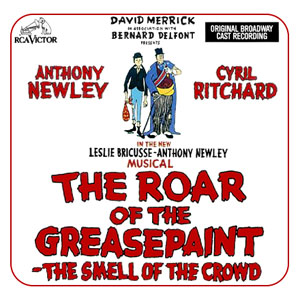
The Roar of the Greasepaint – The Smell of the Crowd is a musical with a book, music, and lyrics by Leslie Bricusse and Anthony Newley. The musical is best known for introducing the standards "Look At That Face", "A Wonderful Day Like Today", "Who Can I Turn To?", "Feeling Good", and "The Joker". The show title is a transposition of the phrase "the smell of the greasepaint, the roar of the crowd," referring to the experience of theatre performers.

I Do! I Do! is a musical with a book and lyrics by Tom Jones and music by Harvey Schmidt which is based on the Jan de Hartog play The Fourposter. The two-character story spans 50 years, from 1895 to 1945, as it focuses on the ups and downs experienced by Agnes and Michael throughout their marriage. The set consists solely of their bedroom, dominated by the large fourposter bed in the center of the room.

Rexford Raymond "Rex" Cherryman was an American actor of the stage and screen whose career was most prolific during the 1920s.
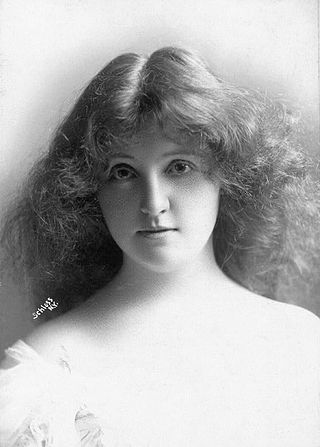
Laura Hope Crews was an American actress. Although she is best remembered today for her later work as a character actress in motion pictures of the 1930s, she also was prolific on stage; among her films roles was the role of Aunt Pittypat in Gone with the Wind.

Catherine Townsend Johnson was an American stage and film actress.

A Princess of Kensington is an English comic opera in two acts by Edward German to a libretto by Basil Hood, produced by William Greet. The first performance was at the Savoy Theatre, London, on 22 January 1903 and ran for 115 performances.

Herbert Yost was an American actor who in a career that spanned nearly half a century performed predominantly on stage in stock companies and in numerous Broadway productions. Yost also acted in motion pictures, mostly in one-reel silent shorts released by the Biograph Company and Edison Studios between November 1908 and July 1915. By the time he began working in the film industry, Yost already had more than a decade of stage experience in hundreds of dramatic and comedic roles and was widely regarded in the theatre community "as one of the country's finest stock actors". Reportedly, to reduce the risk of tarnishing his reputation as a professional actor by being identified as a screen performer, Yost often billed himself as "Barry O'Moore" while working in films. He was ultimately cast in scores of motion pictures in the early silent era, although with the exceptions of appearing in three more films in the sound era, Yost spent the remaining decades of his career acting in major theatre productions, almost exclusively on Broadway.

Beggars of Life is an American part-talkie sound film that was directed by William Wellman. Although the film featured sequences with audible dialogue, the majority of the film had a synchronized musical score with sound effects. The film was released on both sound-on-disc and sound-on-film formats. Currently circulating are mute prints from the sound-on-disc version. The majority of the sound discs are believed to be lost.

Rida Johnson Young was an American playwright, songwriter and librettist. In her career, Young wrote over 30 plays and musicals and approximately 500 songs. She was inducted into the Songwriters Hall of Fame in 1970. Some of her better-known lyrics include "Mother Machree" from the 1910 show Barry of Ballymore, "Italian Street Song", "I'm Falling in Love with Someone" and "Ah! Sweet Mystery of Life" from Naughty Marietta, and "Will You Remember?" from Maytime.
They Knew What They Wanted is a 1924 play written by Sidney Howard. The play premiered on Broadway in 1924 and had three Broadway revivals, as well as a London production.
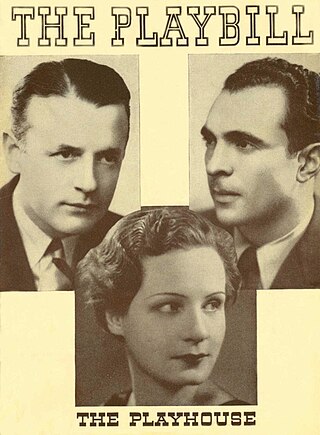
Three Men on a Horse is a three-act farce co-authored by John Cecil Holm and George Abbott. The comedy focuses on a man who discovers he has a talent for choosing the winning horse in a race as long as he never places a bet himself. Originally titled Hobby Horse by John Cecil Holm, Three Men On A Horse was a property controlled and produced by Alex Yokel, who reached out to Warner Bros. for financial assistance; Warners agreed to provide financing on the condition Yokel find someone to doctor the script and direct the Broadway production. George Abbott, the director, who had since 1932 directed and produced each of his Broadway productions, immediately saw the potential and rewrote the script and agreed to direct if he received co-author credit and split the author's royalties with Holm. Abbott wrote a third act, resulting in a new three-act play titled Three Men on a Horse.

Porgy: A Play in Four Acts is a play by Dorothy Heyward and DuBose Heyward, adapted from the short novel by DuBose Heyward. It was first produced by the Theatre Guild and presented October 10, 1927 – August 1928 at the Guild Theatre in New York City. Featuring a cast of African Americans at the insistence of its authors—a decision unusual for its time—the original production starred Frank Wilson, Evelyn Ellis, Jack Carter, and Rose McClendon. Porgy marked the Broadway directing debut of Rouben Mamoulian. The play ran a total of 55 weeks in New York, and the original cast toured the United States twice and performed for 11 consecutive weeks in London.
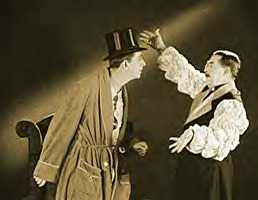
Beggar on Horseback is a 1925 American silent comedy film based upon the 1924 play written by Marc Connelly and George S. Kaufman. It was adapted for the screen by Walter Woods and directed by James Cruze. It stars Edward Everett Horton, Esther Ralston, Erwin Connelly, Gertrude Short, Ethel Wales, Theodore Kosloff, and Betty Compson. It was released on August 24, 1925, by Paramount Pictures.

It Is the Law is a 1924 American silent mystery film directed by J. Gordon Edwards and starring Arthur Hohl, Herbert Heyes, and Mona Palma. It is a film adaptation of the 1922 Broadway play of the same name by Elmer Rice, itself based on a novel by Hayden Talbot. The film depicts the story of Ruth Allen (Palma), who marries Justin Victor (Heyes) over competing suitor Albert Woodruff (Hohl). Seeking revenge for this slight, Woodruff fakes his own death by killing a drifter who resembles him, and frames Victor for the murder. Woodruff attempts to renew his courtship of Allen by using an assumed identity, but she sees through his disguise. Once Victor is freed from prison, he kills Woodruff and goes free because a conviction would constitute double jeopardy.

Jack Whiting was an American actor, singer and dancer whose career ran from the early 1920s through the late 1950s, playing leading men or major supporting figures.
